
HOME Ham Projects Outward Links Links to this site
Posted April 13, 2014
There are a number of advantages to using a Raspberry Pi as a Broadband Hamnet node.
The small size and modest power requirements mean that the Pi can be used in a variety of configurations, including mobile/portable operation.
To make things fairly compact and self contained, I used Velcro to mount the Pi, the Alfa USB WiFi adapter, and a powered hub on the back of a 22" HDTV. Wired the Pi to the HDMI, and it works great! I use a wireless keyboard/touchpad device, to eliminate the need for more cords.
Note that this page assumes you are familiar with the Raspberry Pi and Broadband Hamnet. If not, there are tutorials available all around the internet.

From the front, all you see is the WiFi 5DB omni antenna and the corners of the Raspberry Pi peeking around the corner of the TV.
It essentially rivals an "all-in-one" computer with a wireless keyboard. I will be using this not only for Broadband Hamnet, but also for any other Raspberry Pi applications, since all you need to do is swap out the SD card that the Pi uses for mass storage.
In fact, I have started using Micro SD cards, since they are very compact and I can keep several handy. A Micro SD card holder that holds eight is the size of a credit card. With a low profile Micro SD adapter, they don't stick out from the end of the case, like a full sized SD card does.
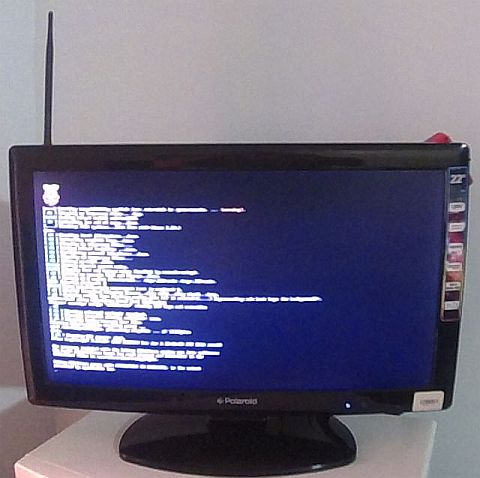
To use a Raspberry Pi as a Broadband Hamnet node, you start with a fresh install of Raspbian Linux. This is a port of Debian Linux especially for the Raspberry Pi.
I start by doing a low level format of the card, installing Raspbian, and then updating. At https://github.com/urlgrey/hsmm-pi you can download the files need to set up HSMM-PI.
"HSMM-MESH" is an older term for what is now called "Broadband Hamnet" or "BBHN". "High-Speed Multi-Media-Mesh" was not descriptive enough for some hams,so it was changed to make it a bit more clear what this is all about.
Basically is it a broadband networking system that automatically forms and updates a mesh of nodes to find the most efficient pathway between a user and a service.
As I try more things with this system, I will write more on specific applications that work over BBHM. BBHN is not an application, it is a networking scheme that automatically builds a robust set of pathways that adapts each time a node is added or lost.
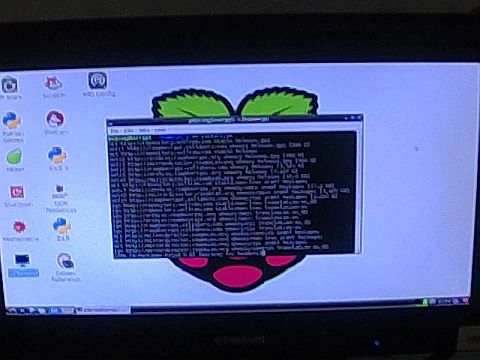
A script loads and installs the necessary files and system updates. Once it finishes, you reboot and configure the system. Configuring the node basically requires you to enter your callsign, a node ID that contains your callsign, and update the SSID to match other BBHN nodes.
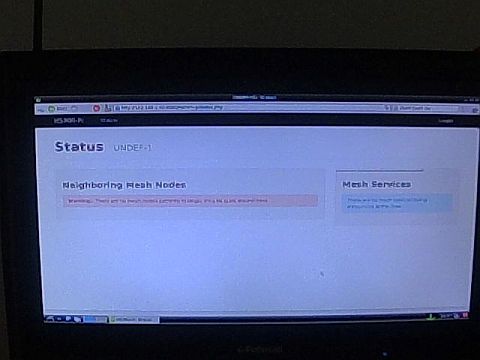
The install on GitHub has the SSID as the obsolete "HSMM-MESH". It needs to be the current "BroadbandHamnet-v1" to connect with other BBHN nodes.
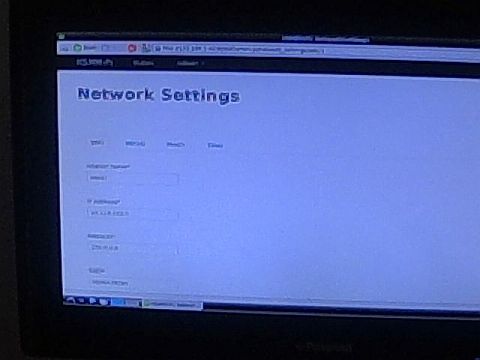
After making those changes and rebooting, the Raspberry Pi node came up and recognized my Linksys node, which is node W6DPS-101.
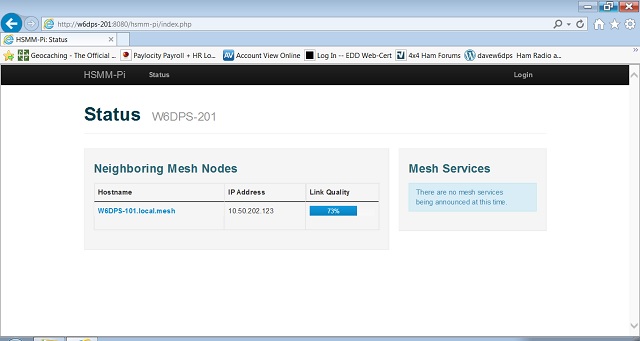
And the Linksys node recognizes the Pi node, which is node W6DPS-201.
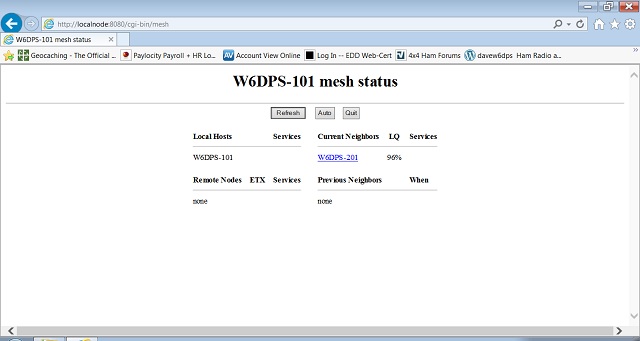
A mesh network of two nodes is not very useful by itself, but eventually I will be connecting other ham's networks. If I ever get back to civilization.
I will be using this little set up to play around and learn about setting up services and functions.
The near-term projects are:
Check back from time to time. I will be updating as I make progress (or reach dead ends...).
April 14, A quick update on the GPS/NTP idea the day after the initial posting.
One of the reasons I thought about using a Pi as an NTP server with a GPS time source was that last month I stopped by a hamfest in Lincoln, NE, and bought a GPS puck for $5. I did a google search and found a blog post about attaching exactly the same GPS model to a Raspberry Pi! What a stroke of luck! Since I hate reinventing the wheel, I am much happier following in the steps of others.
It only took a few mintes to stick the GPS up next to a window and plug it into the USB hub powering the Pi.
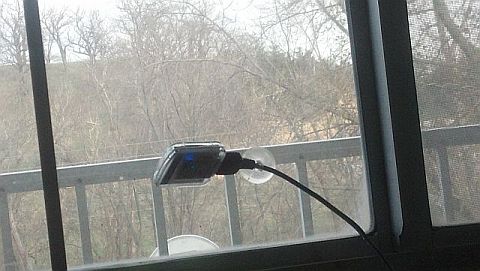
I had a fresh Raspbian card installed, so I had internet access through the Alfa adapter. I downloaded the GPSD and GPSD-Client packages, and started playing.
I ran dmesg to see whether the GPS worked. This is the first time powering it up since I bought it from a miscellany box at a hamfest. Hams are generally good honest folks--the guy I bought it from said it worked good. When I checked it was recognized as a GPS using the Prolific 2303 serial to USB chipset, and had connected as /dev/ttyUSB0.
After running the GPSD daemon and then cgps, I quickly got a connection. At first it said "NO FIX", but after a couple of minutes it saw 3 sats and got a 2D lock. A couple of more minutes and it got a 3D lock with 4 birds on the list. Either would be enough to provide a solid timebase for an NTP server. All with a limited view of the sky, stuck to second floor window with a roof overhang. Of course it has also gotten my brain casting about for additional uses.
I am thinking this could be a very cool set up for APRS, etc. Either with a TNC and radio, or through an igate on the MESH.
Now to find an NTP server utility and figure how to actually make this work...
